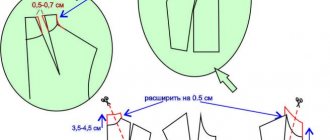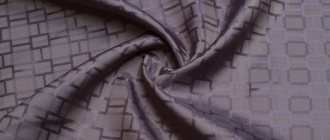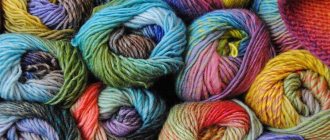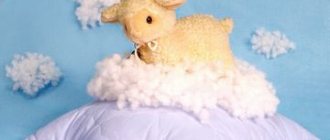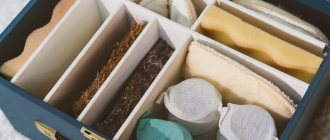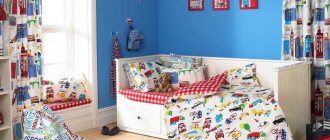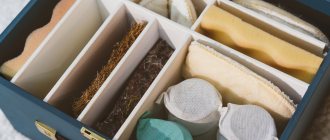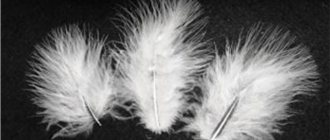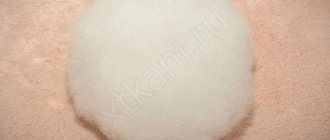Production
The total number of processing stages and operations that fluff goes through is about eighteen.
- The first stage is considered to be raising waterfowl.
- Down is collected from a living bird at a certain period.
- After collection, it is weighed and the quality and degree of moisture are determined, then dried, dusted, sorted and down and feather mixtures are made.
- Then these mixtures are washed in machines with special detergents, squeezed out in centrifuges to a moisture content of 45-50%, and fed into drying machines, where they are finally dried with hot air (at a temperature of 80-120 degrees). Sometimes hot steam cleaning is used.
- Using a fan, the fluff is fed into a collector and pressed into bales.
On a note
All raw materials must be tested and veterinary certificates are issued for them. If the fluff comes from disadvantaged areas where poultry diseases occur, it undergoes mandatory disinfection.
Categories and properties of down and feather filler
The most expensive type of filler is the one that contains the most fluff - 99-100%. It is called Exclusive quality down and has the following properties:
- very durable;
- has low thermal conductivity - the fluffs come into contact with each other and create air layers, forming a barrier that does not let in either heat or cold;
- hygroscopic - capable of absorbing large amounts of moisture and evaporating it into the environment;
- has very low weight - light and delicate down compared to all other fillers, including synthetic ones, has a better weight-to-warmth ratio;
- breathable - ensures good air circulation;
- non-felt - the fluffs do not fall off, as they are very strong, flexible and elastic.
When adding a feather to such a filler, the category decreases. Filling with a down to feather ratio of 95% to 5% belongs to the Premium category, 70% to 30% to the Highest category, 50% to 50% to the First category, 30% to 70% to the Second category.
The more feathers added, the worse the properties of the filler. If small or crushed feathers from killed poultry are added to it (as a waste product from meat production), the filler will have higher thermal conductivity, low hygroscopicity, greater weight and fallability. It is also necessarily treated with chemicals.
WOOL
Sheep's wool
Pillows, duvets and mattress covers filled with pure, natural sheep wool are suitable for any season.
Main consumer characteristics of wool:
- It has the property of thermoregulation due to its ability to pass air.
- Calms nerves, helps normalize blood pressure and sleep.
- It has a beneficial effect on muscles, spine, joints, reducing pain caused by arthrosis, rheumatism, and osteochondrosis.
Sheep wool perfectly regulates body temperature during sleep. It gives dry and healthy warmth, guarantees a calm, sound and deep sleep. It is from sheep's fleece that lanolin is obtained, a substance found in many cosmetic creams and ointments. Lanolin nourishes and softens the skin, has an anti-inflammatory and anti-edematous effect. A unique property of sheep wool is its ability to absorb moisture (up to 30% of its volume) and dissipate it freely. An interesting fact is that sheep wool allows you to lie in the same position for a long time and motionless, and move less during your sleep.
Wool obtained from different breeds of sheep has its own individual characteristics.
Merino sheep produce relatively long, strong and elastic wool with good consumer properties. The characteristic features of this wool are its waviness and exceptionally low weight in relation to volume. These two factors give it special warmth, comfort and excellent spinning properties. The high hygroscopicity of wool contributes to the rapid dispersion of moisture evaporated by the body during sleep.
Crossbred is a general characteristic of sheep breeds obtained by crossing English meat-wool sheep with the uteri of fine-wool Merino sheep. The result was breeds with better wool characteristics from rams with their stiffer, more resilient wool and the fine, long, florid wool of Merino sheep. The canvas has excellent qualities for bedding. The elasticity of wool fibers ensures the strength of the fabric, and its wavy structure holds more air between the fibers. Unlike merino wool, crossbred wool has a less pronounced natural wool smell and is whiter. A blanket made from crossbred sheep wool is a product with excellent thermal insulation and aesthetic properties.
The product range of PPK Agro-Don includes products made from sheep wool:
- Collection "Polly"
- Collection "Golden Fleece"
- Sheep wool mattress covers
Camel's wool
Camel wool has a number of exceptional features.
Nature has provided the camel with wool with unique thermoregulation properties. The night in the desert is very cold, but the day is scorching hot. The hollow and light hair of the coat helps the animal easily tolerate such a wide range of temperatures. At an ambient temperature of +80˚С, the temperature of the animal’s skin along the coat remains +40˚С
Camel wool protects not only from overheating in hot weather, but also from hypothermia in cold weather. Moreover, the heat it gives is dry and therefore therapeutic. It enhances blood microcirculation, activating metabolism and restoration processes in tissues. In products made from it, a person never sweats.
Due to its therapeutic and prophylactic properties, sleeping under a blanket made of this wool can in some cases relieve various symptoms of neuritis, neuralgia, osteochondrosis, arthritis, and rheumatic pain. Camel wool also has high antistatic properties, which help remove the harmful effects of static electricity around us. This helps relieve tension and stress.
The most valuable is the undercoat of a young camel, which is obtained during its natural molt. From one baby they get about 500-700 grams. raw materials, which after processing are called baby camel or super baby.
Super baby down has a fineness of 15 to 20 microns. Color ranges from light cream to red-brown. For comparison, coarse outer hair has a fineness of 25-120 microns (human hair is 50 microns). Wool with a fineness of over 25 microns produces very durable and reliable products. Thick blankets and carpets are made from it.
The product range of PPK Agro-Don includes products made from camel wool:
- Collection "Verbi".
Cashmere goat wool
Cashmere is the down (undercoat) of a mountain goat, which is plucked and combed by hand in the spring during the animal's natural shedding.
The main suppliers of cashmere down are Mongolia and China. Cashmere from India (the main region is the state of Kashmir), Iran and Afghanistan also appears on the market. But this fluff is dirtier, the hair itself is thicker and darker, so the cost of such fluff is noticeably lower.
To obtain fluff, a goat is combed with a special pluck, and per year one goat brings only 100, maximum 200 grams. This is one of the circumstances that determines the very high cost of things made from real cashmere.
The product range of PPK Agro-Don includes products made from cashmere goat wool, presented by:
- Collection "Milan"
FEEL POWER
There is a special indicator of the quality of down and feather filler - the FEEL POWER index (the higher the better).
It shows how resilient the fluff is and how capable it is of recovering from compression.
If the index value is 750 or higher, this is fluff of exclusive quality, it is collected manually and only in the spring from the chest part of the bird, which is constantly in selective housing conditions.
An indicator below 400 indicates a very low quality of the filler; such fluff was collected from a dead bird.
On a note
The degree of elasticity also determines how many degrees the insulation effectively protects from the cold. For example, duck down in a down jacket with a high FEEL POWER index will provide comfort down to minus 30-35 degrees and even lower.
Raw materials
Gaga
The most valuable is considered to be the down of the northern eider bird, which lives in the Arctic climate of Iceland (eider down is also collected in Canada, Denmark, Finland and Norway). It is collected by hand directly from the nests. She plucks it out of herself to warm her offspring with the warmth of her skin.
All subsequent stages of processing are also carried out manually, since the fluffs have the highest degree of adhesion, and in the filled product they form a dense elastic layer that does not change shape during use. Products with eider down are incredibly light, airy and warm. This type of filler is the highest quality and most expensive.
Goose feather
Next comes goose down, which is also divided into categories. The most valuable is the white goose, followed by the gray goose. Its quality depends on both the breed of bird and the habitat: the harsher the climate in which the goose lives, the higher the quality. Canadian is considered the best. Next come the European breeds: Hungarian, Italian, North German and others.
The down of birds that live in harsh conditions, but fly to countries with warm climates (Turkey, China, Germany) for the winter, is of less quality.
Duck
Duck down and feathers are less valuable compared to goose feathers due to the shape of the feather - duck feathers are not curved like a goose's, but straight, therefore in finished products they lie denser and form fewer air spaces, therefore, such products are less warm and heavier .
In addition, duck plumage has a specific smell and requires additional processing. Canadian duck down is of very high quality.
On a note
White duck down is considered a universal insulation material. It is interesting that the raw materials for it are collected from nests, since this species of duck is listed in the Red Book. Birds prepare nests for their chicks by lining the bottom with down, which they pluck from the abdomen and chest. They cover the laid eggs with the same down.
Chicken feather as a filler
It only has a feather. Used for the production of goods in the lowest price segment.
Read about: canvas-stitched fabric: practicality and functionality of non-woven material
Popular manufacturers, prices
Let's look at the most popular manufacturers and find out how much a feather pillow costs:
- Kariguz
. The products of this brand are manufactured in accordance with all GOST standards, as evidenced by a quality certificate. It is distinguished by its hygroscopicity, the ability to easily change and take shape, and the absence of lump formation even during long-term use. The price range of products varies from 5,000 to 25,000 rubles; - Togas
(Togas). The company produces elite products from high-quality, extra-class down. The products are distinguished by texture and special style. The price range for the product is too spread out. Depending on the model, pillows can cost from 4,000 – 5,000 rubles and up to 50,000 rubles; - Dargez
(Dargez). The product of this company occupies a leading place in sales in the CIS countries and Europe. All the company's products undergo multi-level quality control, are constantly improved and their range is expanded according to market demands. The advantages of bedding include: ergonomics and compactness, high quality, environmental friendliness, stylish design. Contains natural down feathers. The average cost in Russia is 2000 – 5000 rubles; - Ikea
(Ikea). The company offers soft and comfortable products that provide a comfortable position for the head, neck and spine. The cost of pillows in Russia varies from 4,000 – 5,000 rubles; - Belpol
. A Russian brand that produces high quality products using innovative technologies. Pillows of this brand are easy to use, have a wide range of models and are affordable. The average price for a model measuring 70x70 cm is 1,800 rubles.
Application and care
The down-feather mixture is used as a filler for those products that are intended as insulation. These are winter outerwear (down jackets, jackets, coats) and bedding (blankets and pillows).
Cloth
For men's, women's and children's down jackets and overalls, down is additionally treated with water-repellent compounds. Usually the filler of the Highest category (70/30%) is used. Such clothes are very light, but protect well from winter frosts.
Modern down jackets are sewn in such a way that fluff and feathers do not come out through the layer of outer fabric. To do this, the filler is placed in special fabric bags, additional cushioning fabric is used, and the seams used to quilt the product are treated with special compounds. To prevent such a down jacket from letting in the cold in the quilting areas, the bags are overlapped.
Thus, a suit with down filling has the following pros and cons. Their main advantage is lightness, durability, and low thermal conductivity of down. However, natural insulation requires additional and special care; it can cause allergic reactions.
Choosing a confidant
When choosing a pillow, you need to pay attention not only to its size, filling and weight, but also to the fabric of the cover. A comfortable sleep, the durability of the pillow and the price of the product depend on the correctly chosen pillowcase. The most popular materials for bedsteads today are the materials whose properties are presented in the table.
| Property/fabric | Teak | Cotton | Satin | Jacquard | Batiste | Silk |
| Density | + | — | + | + | — | — |
| Softness | + | — | + | — | + | + |
| Naturalness | + | + | + | — | — | + |
| Breathability | + | + | + | + | + | + |
| Smoothness | — | — | + | — | — | + |
| Doesn't allow the pen to pass through | + | — | + | + | — | + |
| Wear resistance | + | — | + | + | — | + |
| Low price | + | + | — | — | — | — |
| Peculiarities | The thickest fabric | Cheapest material | High quality high strength material | Presentable, expensive look of the product | Suitable for people with sensitive skin |
Which bedding is preferable for filling, everyone decides for themselves. Many people prefer natural fabrics - cotton, satin, silk. An important point is that you should choose a material with a dense weave of threads so that the down and feathers do not soon crawl out of the case.
How to care for a down jacket made of down and feathers
It is recommended to have the down jacket cleaned, but machine washing with liquid detergent on a delicate cycle is also allowed. To prevent fluff from forming clumps, three tennis balls are placed in the washing machine.
You should not wring out or dry the product in a machine; you should allow the water to drain by laying the down jacket on a horizontal mesh or grid. Then dry with a fan or hair dryer.
Bed dress
Pillows and blankets with such natural filling are very light, soft and warm. They keep their shape well and do not fall off. It is recommended to fluff your pillows by hand every morning (not in the evening).
Care
For such products, dry cleaning in specialized institutions is recommended. You can wash it yourself in a machine at a temperature of 40-60 degrees. Only high quality items are washed. In cheap ones, the filler is more fragile and can be damaged.
Do not dry in direct sunlight or on a radiator. It is best to do this in a well-ventilated area or outside in hot weather (only in the shade), shaking occasionally.
Useful
Down duvets and pillows are contraindicated for allergy sufferers and asthmatics, but many modern manufacturers carry out special anti-allergic treatment of raw materials.
Care for down and feather pillows in the video:
Lots of feathers - not enough fluff
Down makes up less than a fifth of a bird's plumage. So the “clothes” of an average goose (the most popular supplier of raw materials for down jackets) weigh about 300 grams, of which only 18% is pure down. You can get about the same amount of down feathers from one bird. But small feathers (the lowest-grade raw material for down jackets) are in abundance - 52%.
Most often, Italian and Finnish winter clothing manufacturers use a mixture of down and down feathers. The proportion of content of both is usually indicated as a fraction on the product label. To reduce the cost, in addition to down feathers, the Chinese also use ordinary small feathers, which they also inform buyers about on the label. One thing is invariable: the higher the down content in a product, the warmer and more durable it is, and, therefore, more expensive.
How to determine quality
In order to understand whether the filling in a product is of high quality, it is not enough to know the country of manufacture of clothing or bedding. Much depends on the country where the raw materials were produced, but there is no such information on the label.
You can visually check the quality by pressing on the product and seeing how quickly it returns to shape. If high-quality raw materials were used, the shape is restored by 50-70% in 15 seconds, and completely in 2-3 minutes.
Service life
Clothes and blankets filled with goose down can last up to 20 years. But it is recommended to change bedding (pillows and blankets) every few years (or clean it once a year), as they absorb all the substances that are released through human skin.
Thanks to modern technologies, down and feather filling is a very high-quality and environmentally friendly material. With proper care, products with it will last a very long time.
© 2021 textiletrend.ru
Dimensions
You can order a pillow of any shape and size online. Their standard width and length vary from 30 to 80 cm. It is important to pay attention to the height of the product.
The most common dimensions are products (in cm):
- 40x40. They belong to decorative pillows and are intended for interior decoration;
- 40x60. Corresponds to the size of a child's sleeping place. Ideal for round cribs;
- 50x70. Popular standard size, which most often comes with bedding;
- 60x60. An ideal option for an adult, providing maximum comfort while sleeping. Suitable for single beds;
- 68x68. They are in demand due to their compactness and ease of use;
- 70x70. Standard option, suitable for single and double beds. They are the easiest to find pillowcases on sale.
For those who prefer to sleep on their back, it is recommended to choose high pillows. And for people who prefer to rest on their stomach or side, low models are suitable.
